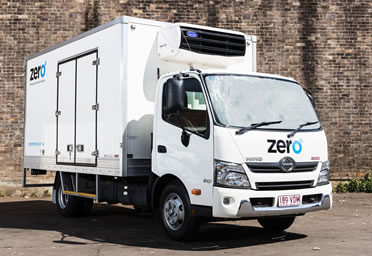
Tips for Better Temperature Management in Refrigerated Food Transport
Refrigerated food transportation, on the surface, seems like an easy thing to do. After all, what more is there to it than renting a fridge van, then putting your cargo into it?
Many people don’t know that without consideration for the right practices, you could leave your massive food delivery at risk for spoilage and wastage. Temperature-controlled vessels and their cargo are far more sensitive than your everyday refrigerator, especially since food is sensitive to the elements.
To that end, we’ve created this list of the best practices in refrigerated food transportation to ensure your cargo survives the entire trip.
Tip 1: Never forget the pre-trip inspection
Before you go on the trip with your rental fridge van, it is important to perform a pre-trip inspection. The transport refrigeration unit (TRU) and the trailer are the first two things you should check. This involves the following checks:- Clearing the previous alarm codes and mitigating existing alarms
- Visually inspecting the trailer to ensure that the unit isn’t physically compromised
- A fuel level check to ensure that there is enough fuel for the duration of the trip
Tip 2: Always pre-cool the trailer
The unit must be pre-cooled before the cargo is loaded. This is to make sure that the temperature of the cargo doesn’t rise after it is loaded. A rise in the temperature of the cargo may cause it to melt and spoil. The temperature might be different depending on what type of food or perishable good is being transported. To reduce the risk of the temperature rising due to escaping cold air, the trailer’s temperature is set a few degrees lower than the recommended storage temperature by the manufacturer. You may choose to quickly pull down the temperature or do so gradually; the latter is a favorable choice that saves fuel, but takes more time.Tip 3: Install door switches
One way you can ruin the food is by keeping the trailer running while cargo is being loaded. The trailer produces hot air, which can enter the unit when the trailer doors are open. This can be solved by having door switches that automatically turn off the trailer when the doors are opened.Tip 4: Stimulate circulation within the unit
Anybody who drives a vehicle knows that there are hotspots in certain places in the vehicle. A hotspot in even just a small part of the fridge van might cause some of the cargo to thaw and melt. As such, it is important to keep the air running throughout the refrigerated unit. This will continuously disperse the heat, cooling down hotspots and keeping goods safe.Final thoughts
There is an art and science to the field of refrigerated food transport, and it all boils down to one thing: managing heat. Having a fair knowledge of how heat can move throughout a system can help mitigate its devastating effects on perishable cargo. With the right strategies and elbow grease, you could easily make your deliveries safely and without waste. If you’re in need of fridge van rentals in Sydney to transport your food, send us at Zero Rentals a message. We can help you take your cargo from point A to B in no time.
Comments : 0
